 2000 Saturn LW Dimensions, Size & Specs
2000 Saturn LW Dimensions, Size & SpecsMeasurements of the 2000 Saturn LW, engineered for optimal performance and comfort
| Dimensions | |
|---|---|
| Length: | 4835 mm190.4 in15.9 ft |
| Width: | 1755 mm69.1 in5.8 ft |
| Height: | 1455 mm57.3 in4.8 ft |
| Trunk Capacity: | 495 liter17.5 cu ft |
| Trunk Capacity (Max): | 2015 liter71.2 cu ft |
| Weight Specifications | |
| Curb Weight: | 1395-1485 kg3075-3274 lbs |
| Tire Specifications | |
| Rims Size: |
|
| Tire Sizes: |
|
The Saturn LW, produced between 1999 and 2004 with model years spanning 2000 to 2004, is a midsize station wagon designed to provide both practicality and comfort. Measuring 4835 mm (190.3 inches) in length, 1755 mm (69.1 inches) in width, and standing 1455 mm (57.3 inches) tall, the LW offers a balanced exterior footprint suitable for families seeking spaciousness without excessive bulk. Its curb weight ranges from 1395 to 1485 kilograms (3075 to 3275 pounds), reflecting a vehicle engineered for efficiency and steady handling. One of its stand-out features is its luggage capacity: the rear cargo space provides 495 liters (17.5 cubic feet) of room for everyday needs, which can be expanded to an impressive 2015 liters (71.1 cubic feet) by folding down the rear seats, ideal for transporting larger items or luggage during trips. The LW rides on rim sizes predominantly of 15 inches in diameter, with tire sizes including 195/60 R15 or 205/55 R16, which contribute to the station wagon’s smooth ride and road grip. Overall, the Saturn LW during this generation remains a versatile and practical option in the midsize station wagon segment, combining efficient dimensions and functional cargo space for families and drivers seeking a flexible vehicle.
Discover the standout features that make the 2000 Saturn LW a leader in its class
Have a question? Please check our knowledgebase first.
The Saturn LW station wagon, produced from 1999 to 2004, measures 4835 mm (190.2 inches) in length, 1755 mm (69.1 inches) in width, and 1455 mm (57.3 inches) in height. These dimensions provide a balance of spaciousness and maneuverability typical of early 2000s station wagons, making it suitable for families and those needing ample cargo space without excessive bulk.
The curb weight of the Saturn LW ranges between 1395 kg (3075 lbs) and 1485 kg (3275 lbs). This variation depends on factors like trim levels, optional equipment, and the inclusion of different engine or drivetrain configurations. The heavier models typically include added features or all-wheel-drive options, which contribute to the increase in overall weight.
The Saturn LW station wagon offers a practical luggage space of 495 liters (about 17.5 cubic feet) with the rear seats in the upright position, sufficient for everyday groceries or travel bags. When the rear seats are folded down, the available luggage capacity expands significantly to 2015 liters (approximately 71.1 cubic feet), providing ample room for larger cargo such as sports equipment, furniture, or bulky luggage, making it highly versatile for various transport needs.
The Saturn LW typically rolls on 15-inch rims, paired with tires sized 195/60 R15 or optionally 205/55 R16. These tire dimensions strike a balance between ride comfort, handling stability, and fuel efficiency. The availability of slightly larger tires as an option allows for improved grip and aesthetics without compromising the vehicle's overall road manners.
Yes, the Saturn LW's dimensions make it compatible with most standard residential garages. With a length of 4835 mm (190.2 inches) and a width of 1755 mm (69.1 inches), it comfortably fits within typical garage dimensions, which usually provide clearance widths of around 2400 mm (94.5 inches) and depths between 5400 to 6000 mm (212.6 to 236.2 inches). Its height of 1455 mm (57.3 inches) also poses no clearance issues for standard garage door heights.
The Saturn LW, introduced in 1999, succeeded earlier compact offerings such as the Saturn SW station wagon. Compared to predecessors, the LW generation grew in size, particularly in length, offering more interior and cargo space. The 4835 mm (190.2 inches) length is notably larger, enhancing passenger comfort and luggage capacity. This increase in size also translated into a sturdier curb weight ranging up to 1485 kg (3275 lbs), reflecting improvements in build quality, safety features, and amenities over the previous generation.
With a maximum luggage capacity of 2015 liters (71.1 cubic feet) when rear seats are folded, the Saturn LW stands competitively among early 2000s mid-size station wagons like the Ford Taurus Wagon and Toyota Camry Wagon. Its flexible interior configuration and flat-folding rear seats allow it to efficiently accommodate large or irregularly shaped items. While some competitors may offer marginally more cargo space, the LW balances its storage capabilities with a manageable exterior footprint and weight, making it a practical choice for versatile usage.
The Saturn LW generally comes with 15-inch wheels fitted with either 195/60 R15 or optional 205/55 R16 tires. The standard 195/60 R15 tires focus on providing a comfortable ride and good fuel economy, while the optional 205/55 R16 tires offer improved handling and a slightly sportier feel due to a lower sidewall profile. These tire sizes aid in maintaining a balance between ride comfort and responsive steering suitable for daily driving conditions.
The Saturn LW stands at a height of 1455 mm (57.3 inches), a moderate profile for a station wagon. This height offers reasonable headroom for most passengers while facilitating easy entry and exit, especially compared to taller SUVs. The lower roofline compared to taller vehicles also slightly improves aerodynamic efficiency and vehicle handling, while still maintaining sufficient interior space for comfort.
The Saturn LW has a width of 1755 mm (69.1 inches), which strikes a balance between on-road stability and urban maneuverability. This width offers a stable stance on the road, aiding driving dynamics and safety in crosswinds, while also providing adequate shoulder room inside the cabin for front and rear passengers. Additionally, its moderate width ensures it can navigate standard parking spaces and narrow streets comfortably.
Discover similar sized cars.
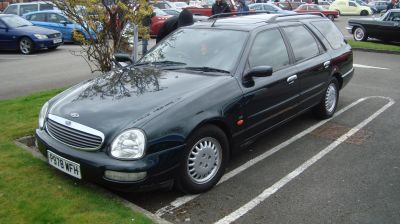
| Production: | 1994-1998 |
|---|---|
| Model Year: | 1995 |
| Length: | 4826 mm190.0 in |
| Width: | 1875 mm73.8 in |
| Height: | 1442 mm56.8 in |
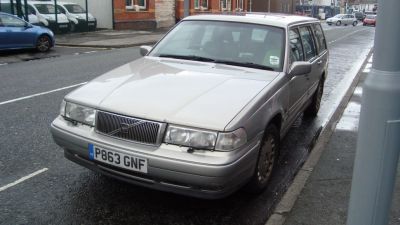
| Production: | 1996-1998 |
|---|---|
| Model Year: | 1997 |
| Length: | 4861 mm191.4 in |
| Width: | 1750 mm68.9 in |
| Height: | 1450 mm57.1 in |
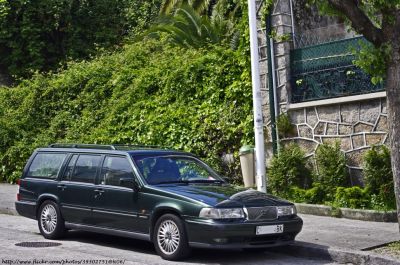
| Production: | 1990-1996 |
|---|---|
| Model Year: | 1991 |
| Length: | 4850 mm190.9 in |
| Width: | 1750 mm68.9 in |
| Height: | 1434 mm56.5 in |
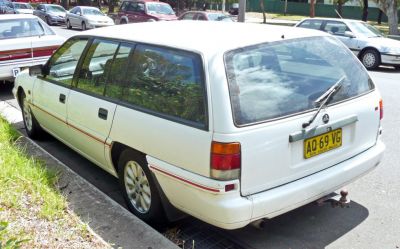
| Production: | 1993-1997 |
|---|---|
| Model Year: | 1991 |
| Length: | 4903 mm193.0 in |
| Width: | 1794 mm70.6 in |
| Height: | 1478 mm58.2 in |
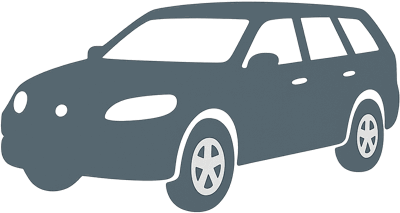
| Production: | 1993-1995 |
|---|---|
| Model Year: | 1993 |
| Length: | 4903 mm193.0 in |
| Width: | 1794 mm70.6 in |
| Height: | 1478 mm58.2 in |
